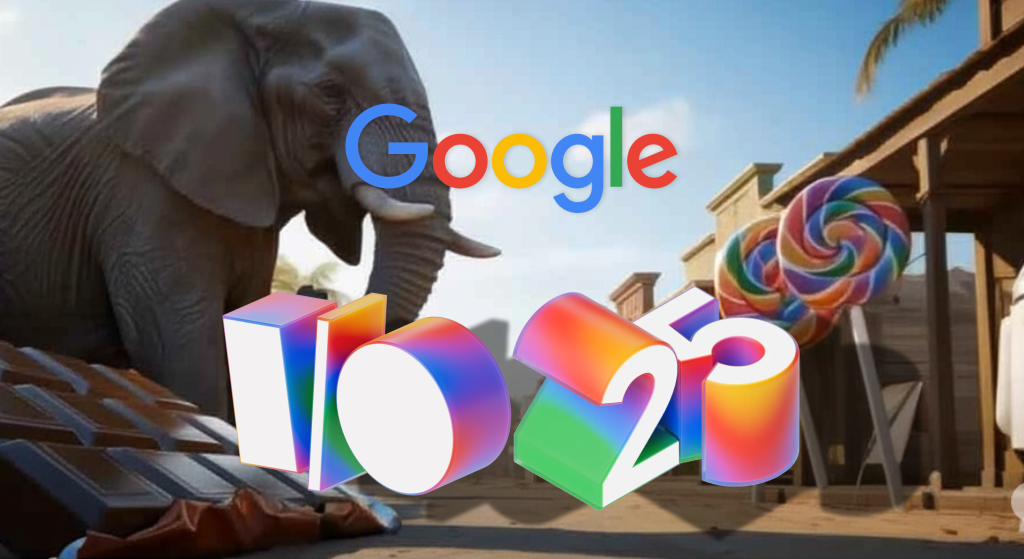Google I/O 2025: A Deep Dive into the Latest Tools and Innovations!

Google I/O 2025 was packed with exciting announcements, especially concerning new tools and advancements, primarily powered by the versatile Gemini ecosystem. Here’s a detailed look at some of the standout releases and enhancements that are set to redefine developer workflows and user experiences:
Gemini Ecosystem Expansions and AI Power-ups
The Gemini ecosystem was at the core of many announcements, with a strong focus on making AI more accessible and powerful across various platforms.
- Gemini Live: This AI assistant allows for real-time voice conversations and the ability to share your phone’s camera and screen. It’s now available worldwide on Android and iOS devices, letting users interact with Gemini by showing it their surroundings or what’s on their screen for instant insights and translations.
- Gemini 2.5 Flash: Positioned as the new default model in Google’s Gemini chatbot, 2.5 Flash is optimized for speed and cost-efficiency. It boasts improved understanding of images and text, making daily AI interactions faster and more intuitive.
- Deep Research in Gemini: This feature allows Gemini to conduct longer research projects, with the ability to link documents from Drive or Gmail and customize sources for pulling information, including academic literature.
- Agent Mode: An experimental feature that lets you describe an end goal, and Gemini will work to accomplish tasks on your behalf.
- Gemini Quizzes: Available worldwide on Gemini desktop and mobile, this feature enhances learning and interaction with Gemini.
- Google AI Ultra: A new subscription plan offering the highest usage limits and access to Google’s most capable models and premium features, along with 30 TB of storage and YouTube Premium. It includes early access to experimental AI products like Project Mariner and Veo 3.
Creative Tools for Content Generation
Google introduced impressive new tools for creating compelling visual and audio content, leveraging advanced AI models.
- Veo 3: This is a groundbreaking AI video generator capable of delivering synchronized audio alongside its video creations. It can generate elements like traffic noises, bird sounds, or even dialogue. Available for Gemini Ultra subscribers in the US and in Vertex AI, Veo 3 marks a significant leap in AI-powered video production.
- Flow: An AI filmmaking tool that allows creators to adjust video production elements like camera angles, motions, cast, and location using natural language prompts. It’s available for Google AI Pro and Ultra plan subscribers in the US.
- Imagen 4: The latest version of Google’s AI image generator. Imagen 4 produces higher resolution images (up to 2K) with improved accuracy and and clarity, particularly with fine details like fabric textures. It also shows significant advancements in handling text within images.
Developer-Centric Enhancements and AI in Coding
Google continues to empower developers with advanced tools and AI integrations within their development environments.
- Jules (Asynchronous Coding Agent): Now in public beta, Jules is an autonomous coding agent that works directly with your GitHub repositories. It can handle tasks like version upgrades, writing tests, updating features, and fixing bugs asynchronously, freeing up developers for other work.
- Stitch: A new AI-powered tool designed to generate high-quality user interface designs and corresponding frontend code for web applications. Developers can iterate on designs conversationally via chat, adjust themes, and export creations to CSS/HTML or Figma.
- Gemini in Android Studio: This integration brings agentic AI capabilities to Android Studio, making app testing easier by allowing developers to describe user journeys in natural language for Gemini to perform. Features include:
- Compose preview generation: Gemini can automatically generate Jetpack Compose preview code.
- Transform UI with Gemini: Modify UI code directly within the Compose Preview environment using natural language.
- Image attachment in Gemini: Attach project files as context in chat interactions with Gemini.
- New built-in AI APIs using Gemini Nano: These APIs bring enhanced privacy, reduced latency, and lower cost for on-device AI tasks. Available in Chrome 138 Stable, these include the Summarizer API, Language Detector API, Translator API, and Prompt API for Chrome Extensions. Writer and Rewriter APIs are in origin trials, with Proofreader API and multimodal Prompt API in Canary.
- MedGemma: Google’s most capable open model for multimodal medical text and image comprehension, based on Gemma 3. It’s designed as a starting point for developers building healthcare applications, such as analyzing radiology images or summarizing clinical data.
- SignGemma: A sign language understanding model, coming later this year to the Gemma family, aiming to be the most capable model for translating sign languages into spoken language text (best at American Sign Language to English).
Other Notable Innovations
Beyond developer tools and creative AI, Google also announced broader AI applications and features for consumers.
- AI Mode in Search: Rolling out in the US, this new AI-powered search experience presents a chatbot interface instead of traditional search results, leveraging the Shopping Graph for enhanced product Browse and agentic checkout features.
- Virtual Try-On: A new shopping feature that allows users to virtually try on clothes by uploading a single image of themselves.
- LearnLM: A family of fine-tuned models for learning, now available directly in Gemini 2.5, making it a leading model for educational purposes with advanced STEM reasoning, multimodal understanding, and assessment capabilities.
- Google Beam: Project Starline is evolving into Google Beam, an AI-first 3D video communication platform that uses AI to turn 2D video streams into realistic, immersive video calls.
Google I/O 2025 has truly underscored Google’s commitment to an AI-first future, providing a vast array of tools and capabilities that promise to enhance productivity, creativity, and user experiences across its diverse ecosystem. The focus on making advanced AI accessible to developers and users alike paves the way for exciting innovations in the years to come.
Share this content:
